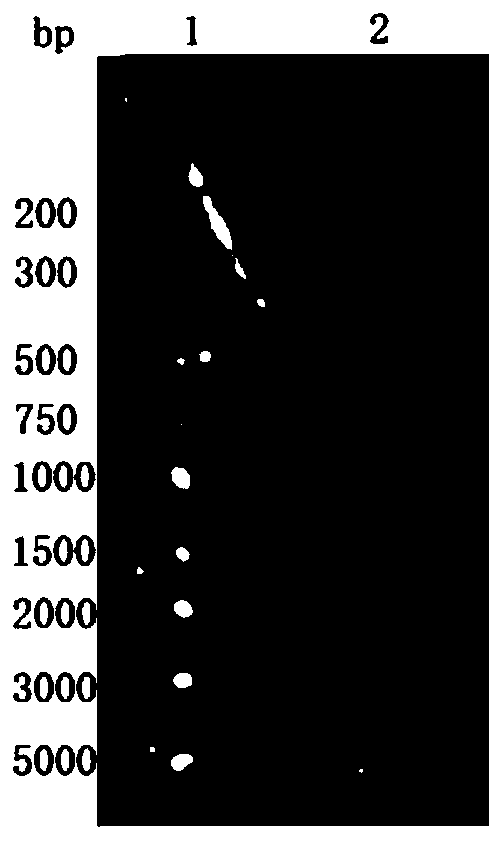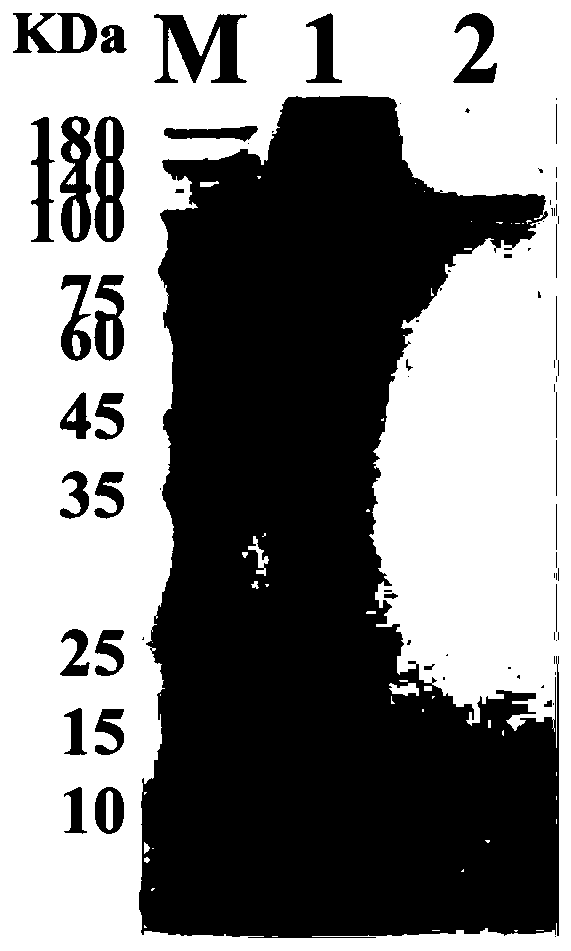1, 4-alpha-glucan branching enzyme, gene thereof, and engineering bacteria containing gene and application of engineering bacteria
A technology of starch branching enzyme and starch processing, which is applied in the direction of genetic engineering, application, plant gene improvement, etc., can solve the problems of limited activity and catalytic characteristics of starch branching enzyme, and achieve the effect of wide branching chain distribution characteristics and high catalytic efficiency
- Summary
- Abstract
- Description
- Claims
- Application Information
AI Technical Summary
Problems solved by technology
Method used
Image
Examples
Embodiment 1
[0033] Expression purification and activity determination of embodiment 1 starch branching enzyme
[0034] 1.1 PCR amplification of starch branching enzyme gene
[0035] Referring to the Aquabacterium sp.strain A7-Y genome sequence and combined with NCBI genome information for ORF prediction, the starch branching enzyme gene primers were designed with the full-length sequence, and the genome DNA of A7-Y strain (CCTCC NO: M2012316) was used as a template to carry out starch branching The full-length PCR amplification of the enzyme gene obtains the full-length sequence of the starch branching enzyme gene. The full length of the gene (from the start codon to the stop codon) is 1881bp, the G+C content is 68.4%, the gene sequence is SEQ ID NO.1, encoding 626 amino acids, and the amino acid sequence is SEQ ID NO.2. The primers used are F and R, see the results figure 1 . Refer to the specific process figure 2 .
[0036] F: GGGAATTCCATATGGTGCTGAGCGATCACGACA (Nde I) (SEQ ID NO. ...
Embodiment 2
[0045] Example 2. Study on Enzymatic Characteristics of Starch Branching Enzyme AqGBE
[0046] 3.1 Effect of temperature on enzyme activity
[0047] Determination of the optimum reaction temperature: measure the activity of the recombinant enzyme at different temperatures (20°C, 30°C, 40°C, 45°C, 50°C, 55°C, 60°C, 70°C) and pH 7.0, the highest Enzyme activity was set to 100% ( Figure 4 a). Determination of thermal stability: Incubate the recombinant enzyme at 20°C, 30°C, 40°C, 45°C, 50°C, 60°C, 70°C, and pH 7.0 for 1 hour, cool it rapidly on ice, and measure the residual enzyme activity respectively. Take the unincubated enzyme activity as 100% ( Figure 4 b). It has been determined that the optimum reaction temperature of the starch branching enzyme is 40°C, and it remains relatively stable between 20°C and 50°C.
[0048] 3.2 The effect of pH on enzyme activity
[0049] Determination of the optimum reaction pH: measure the activity of the recombinant starch branching e...
Embodiment 3
[0054] Embodiment 3. Utilize starch branching enzyme AqGBE to prepare multi-branched modified starch
[0055] Prepare 10% potato starch for 30 minutes in a boiling water bath to fully gelatinize. After cooling, add starch branching enzyme AqGBE at an amount of 500 U / kg of starch, react at 40°C for 10 minutes and 30 minutes, and terminate the reaction in a boiling water bath. The prepared enzyme-treated starch is then added with isoamylase (1U / mg starch) for debranching reaction at 40° C. for 24 hours, and the reaction is terminated in a boiling water bath. Polymerization analysis of branched chains was carried out by high performance anion exchange chromatography (ICS-5000, DIONEX, USA). The results showed that the branched chain content of starch with high degree of polymerization increased (DP>25) after 10 min treatment, and the content of branched chain with low degree of polymerization increased after 30 min treatment (DP<7) (Table 2). The results indicated that the starc...
PUM
 Login to View More
Login to View More Abstract
Description
Claims
Application Information
 Login to View More
Login to View More - R&D
- Intellectual Property
- Life Sciences
- Materials
- Tech Scout
- Unparalleled Data Quality
- Higher Quality Content
- 60% Fewer Hallucinations
Browse by: Latest US Patents, China's latest patents, Technical Efficacy Thesaurus, Application Domain, Technology Topic, Popular Technical Reports.
© 2025 PatSnap. All rights reserved.Legal|Privacy policy|Modern Slavery Act Transparency Statement|Sitemap|About US| Contact US: help@patsnap.com



